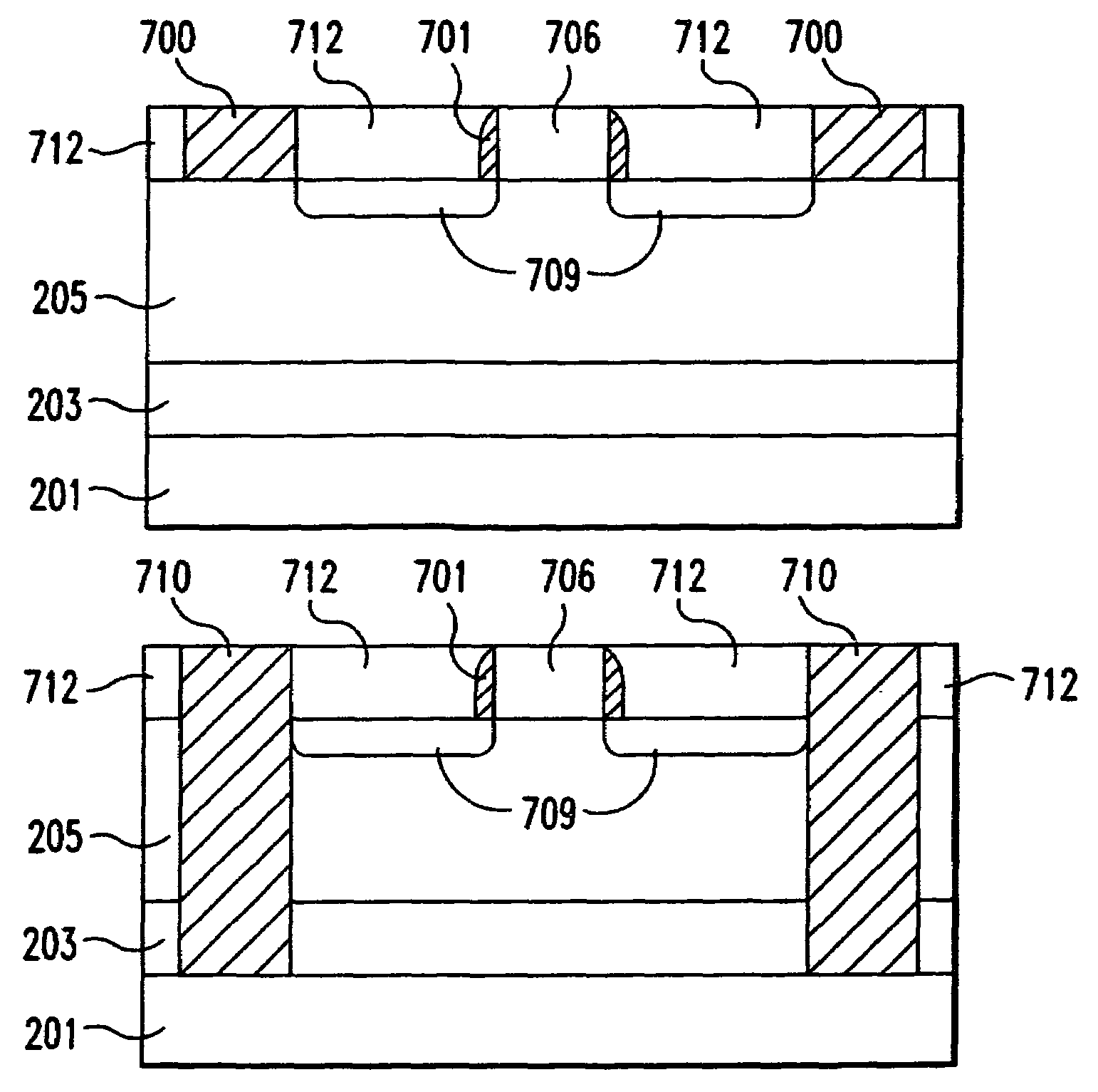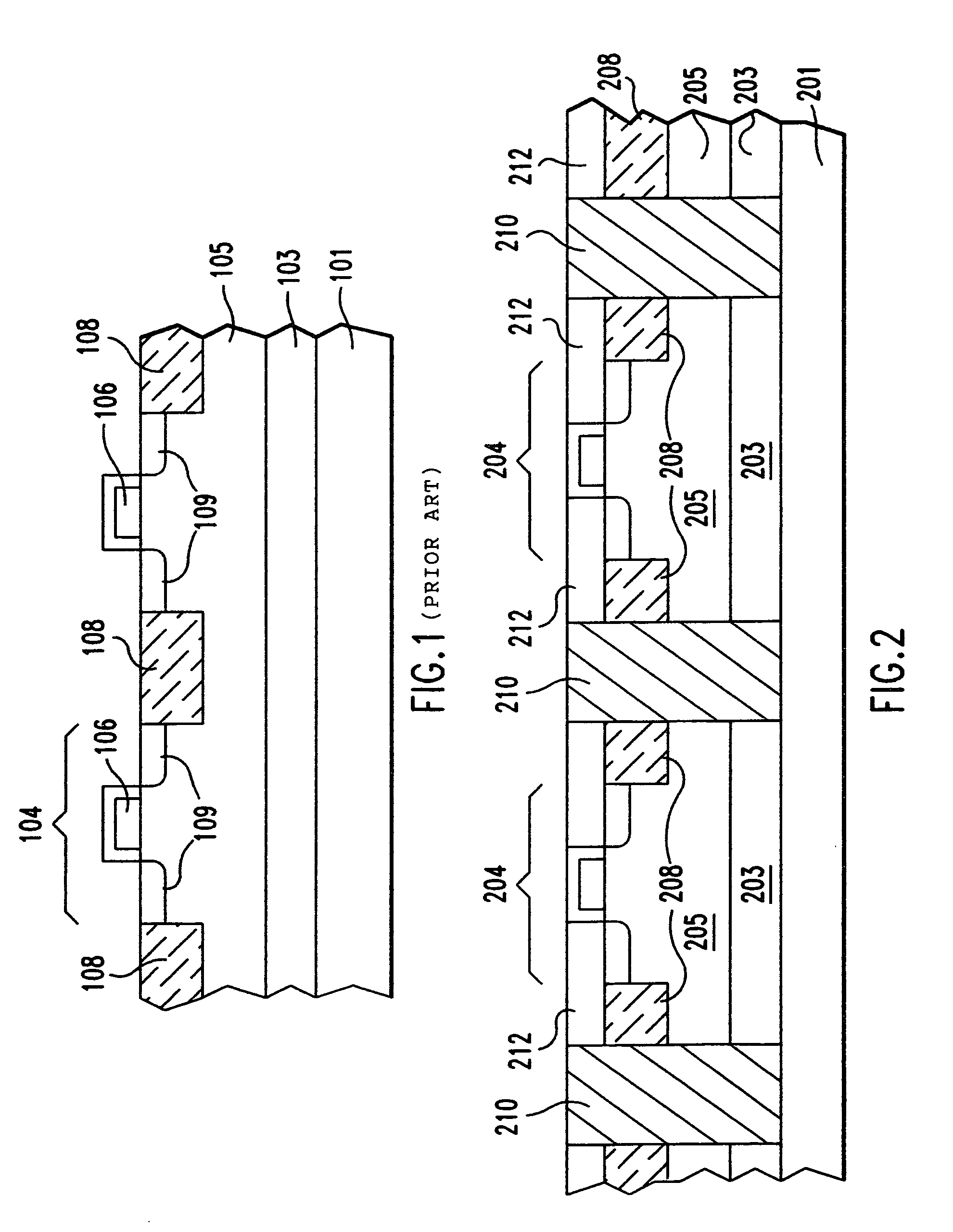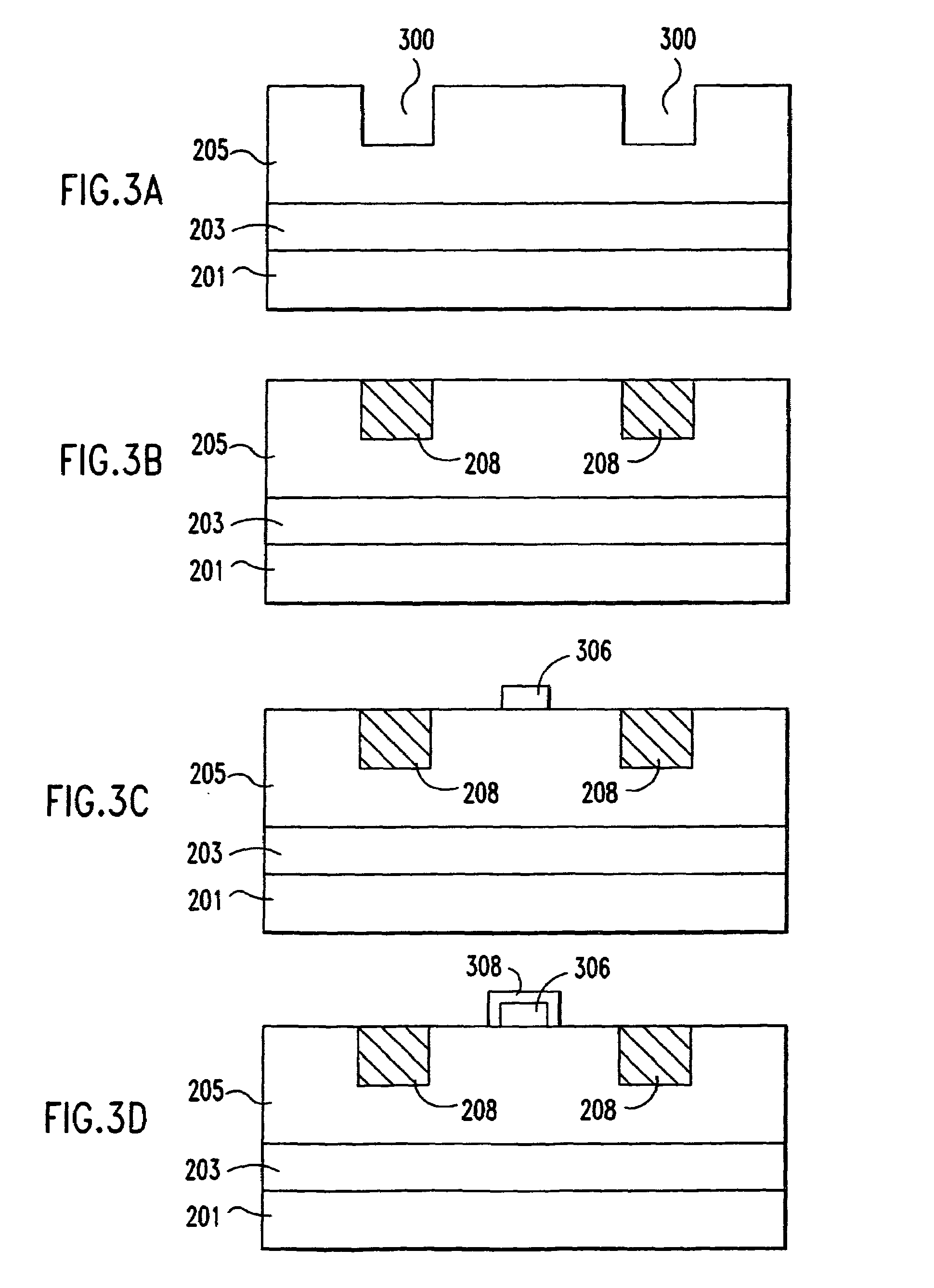Method and structure for providing improved thermal conduction for silicon semiconductor devices
a technology of silicon semiconductor devices and thermal conduction structures, which is applied in the direction of semiconductor devices, semiconductor/solid-state device details, electrical apparatus, etc., can solve the problems of reducing the thermal conductivity of silicon semiconductor devices, increasing leakage current exponentially, and discharging heat to the 400, so as to achieve low electrical conductivity and high thermal conductivity
- Summary
- Abstract
- Description
- Claims
- Application Information
AI Technical Summary
Benefits of technology
Problems solved by technology
Method used
Image
Examples
Embodiment Construction
[0023]The present invention provides semiconductor cooling structures which are superior to those found in the prior art. The cooling structures include a first embodiment comprising thermal conduction paths formed in a silicon-on-insulator (SOI) structure having a buried oxide (BOX) layer, where the thermal conduction paths are formed between the shallow trench layers which isolate device and extend through the BOX layer to contact the underlying silicon. A second implementation of the invention provides for formation of diamond shallow trench regions between devices after device fabrication has been completed, either on an SOI or a bulk silicon structure. Under such an embodiment, more effective thermal conduction paths can be provided in the shallow trenches since the diamond would not require silicon nitride and oxide overlayers to protect it from subsequent thermal oxidation steps. Another embodiment includes a planar, thermally conductive insulation layer disposed over the com...
PUM
| Property | Measurement | Unit |
|---|---|---|
| thickness | aaaaa | aaaaa |
| thickness | aaaaa | aaaaa |
| thermal conduction | aaaaa | aaaaa |
Abstract
Description
Claims
Application Information
 Login to View More
Login to View More - R&D
- Intellectual Property
- Life Sciences
- Materials
- Tech Scout
- Unparalleled Data Quality
- Higher Quality Content
- 60% Fewer Hallucinations
Browse by: Latest US Patents, China's latest patents, Technical Efficacy Thesaurus, Application Domain, Technology Topic, Popular Technical Reports.
© 2025 PatSnap. All rights reserved.Legal|Privacy policy|Modern Slavery Act Transparency Statement|Sitemap|About US| Contact US: help@patsnap.com



